CHINESE CONSUMERS AND NEW RETAIL TRENDS Video MASTERCLASS
WHY UNDERSTANDING CHINESE CONSUMER BEHAVIOR IS NO LONGER OPTIONAL
China’s consumer market is not only vast—it’s evolving at a pace and scale that has become globally influential. With over 1 billion mobile internet users, a smartphone penetration rate exceeding 75%, and an e-commerce adoption rate of more than 45%—the highest in the world—China’s digital economy is a blueprint for the future of consumer behavior. But this is more than a story of scale. It’s a story of transformation. Today’s Chinese consumers are younger, more digitally native, and far more discerning than even five years ago. They expect speed, personalization, and purpose. Platforms like Douyin, RedNote, and WeChat are no longer just social or shopping tools—they are lifestyle infrastructures where discovery, transactions, entertainment, and services are seamlessly integrated. The convergence of content, community, commerce, and convenience has created a new consumer operating system—one where attention is scarce, loyalty is fluid, and expectations are shaped by AI-powered experiences.
What happens in China’s consumer economy increasingly influences how innovation is deployed globally. Brands around the world—from Paris to Jakarta to São Paulo—are now learning from China’s platform strategies, retail experiments, and behavioral shifts. But simply observing is not enough. To remain relevant in any competitive market, businesses must understand what’s driving these changes at a deep, actionable level.
At ChoZan, Our free “China’s Modern Consumers and New Retail Trends” masterclass helps you make sense of this fast-changing environment. Designed as a compact yet impactful consumer behavior course, it decodes the cultural, technological, and platform-driven shifts shaping consumer expectations in China—and how leading brands are responding. You’ll learn how both local champions like Alibaba and JD.com and global brands like Nike and L’Oréalare adapting in real time to stay relevant. Whether you’re exploring consumer insights courses, want to understand omnichannel retail trends, or are seeking a Taobao tutorial or WeChat case study, this session will equip you with the frameworks and examples you need to navigate China’s next chapter in commerce.

INSIDE THE MASTERCLASS – WHAT YOU’LL LEARN ABOUT CONSUMER AND RETAIL TRENDS IN CHINA
OMNICHANNEL RETAIL IN ACTION
You’ll learn how to navigate the interconnected world of online and offline retail in China. Through case studies from platforms like Taobao, RedNote, and JD, we’ll explore how Chinese consumers engage with brands seamlessly across digital and physical touchpoints. You’ll also gain insights into the shift towards entertainment-driven retail experiences and how businesses can leverage this integration to drive consumer engagement.
THE CHINESE LIFE OS: THE ENGINE BEHIND NEW RETAIL
The concept of the “Life OS” is key to understanding China’s new retail dynamics. Discover how platforms like Alipay, Douyin, and Meituan create an interconnected ecosystem where digital services, data, and consumer touchpoints are seamlessly integrated. You’ll gain insight into how these platforms are changing the way brands interact with consumers and how you can adapt your own business strategy to tap into this new retail ecosystem.
O2O RETAIL TRANSFORMATION
Learn about the online-to-offline (O2O) retail transformation that’s taking place in China. Explore how digital overlays, hyperlocal logistics, and gamified experiences are transforming brick-and-mortar retail. This section will help you understand how brands are creating integrated experiences that blend the best of both worlds to meet consumer expectations in an omnichannel environment.
DIGITAL INFLUENCE: FROM COMMUNITY COMMERCE TO KOCS
The rise of Key Opinion Consumers (KOCs) marks a shift in how brands build trust and influence in China. Explore how decentralized, peer-driven networks are reshaping consumer behavior. In this section, you’ll learn how community commerce and micro-communities are influencing purchasing decisions and how you can engage with these networks to build authenticity and deeper consumer loyalty.
STRATEGIC FRAMEWORKS FOR YOUR MARKET
Get actionable tools to map consumer segmentation and design digital retail experiences inspired by China’s market innovations. This section provides frameworks that can help you apply insights from the masterclass to your business, whether you’re looking to pilot new retail models or refine your approach to customer engagement
KEY CONSUMER INSIGHTS
ChoZan’s China’s Modern Consumers and New Retail Trends Masterclass provides an in-depth understanding of the evolving consumer landscape in China. In this section, participants will explore the major behavioral shifts that have defined the rise of China’s next-generation consumers. The course begins with an exploration of the digital lifestyles that influence consumer choices, from the importance of social media platforms like Douyin and RedNote to the preferences of younger, tech-savvy generations. These consumers are more connected and vocal than ever, shaping the digital ecosystem and pushing brands to adapt to fast-changing trends. Participants will learn how expectations have evolved, from the demand for hyper-personalized services to the need for speed in both product delivery and digital interactions. This section is the foundation for understanding why China’s consumer market is not only influential but rapidly setting the pace for retail globally.
NEW RETAIL ECOSYSTEM IN CHINA
The course will then dive into new retail trends that are reshaping shopping experiences across China. The concept of “new retail” goes beyond mere online and offline integration—it’s about creating a seamless experience where the boundaries between digital and physical spaces are almost invisible. Brands like Alibaba and JD are at the forefront of this transformation, using tech-driven solutions to improve customer engagement, streamline operations, and enable real-time decision-making. Participants will understand how China’s retail giants have pioneered this shift, offering insights into how brands around the world can adapt to this new landscape. With a focus on omnichannel retail trends, the masterclass explains how businesses can meet consumer expectations for flexibility, convenience, and a highly interactive shopping experience.
EXPERIENTIAL AND IMMERSIVE STORE DESIGNS
As the retail environment in China continues to evolve, brands are increasingly adopting experiential and immersive store designs that go beyond simple product display. Chinese retailers are merging physical retail with digital experiences to create immersive shopping journeys. These experiential stores combine high-tech digital features with culturally relevant elements to create spaces that are not only visually appealing but also interactive. For example, Zara’s flagship store in Nanjing features a stunning art installation by Chinese artist Jujuwang, making the shopping environment both a cultural experience and a retail space. Tiffany & Co. has also embraced this trend, with stores in Chengdu incorporating local cultural elements like a magnolia chandelier, which strengthens the brand’s connection to its audience. According to CBRE, 60% of Chinese consumers prefer shopping from brands that provide unique in-store experiences, a trend expected to increase in the coming years.
CULTURAL AND LOCAL COLLABORATIONS
Another defining trend in China’s retail scene is the growing emphasis on cultural and local collaborations. Brands are increasingly forming partnerships with local artists, creators, and businesses to create culturally rich, regionally tailored experiences that resonate with consumers. Perfumer H, for instance, blends art and commerce in Shanghai by offering bespoke products crafted by local artists, creating a space where customers can appreciate both the products and the local art scene. McKinsey’s research highlights that over 70% of Chinese consumers prefer shopping from brands that integrate local culture into their offerings. This partnership-driven approach helps brands connect more deeply with local customers, fostering loyalty and emotional engagement by celebrating regional identity and craftsmanship.
PERSONALIZED AND EFFICIENT SHOPPING EXPERIENCES
Personalized and efficient shopping experiences are becoming more prevalent in China, as technology continues to transform the retail experience. Retailers like Zara and Tiffany & Co. are leading the way by offering services that cater to the specific needs of consumers. For example, Zara’s introduction of vending machines for quick clothing purchases demonstrates how efficiency and convenience are prioritized in China’s fast-paced retail environment. At the same time, the brand’s personalized styling services ensure that consumers enjoy a tailored shopping experience. In luxury retail, Tiffany & Co. is focusing on offering private lounges for its affluent customers, offering exclusive and personalized services that speak to their desire for luxury and privacy. This growing trend emphasizes the need for brands to adapt to consumer demands for both efficiency and customization, ensuring their success in a competitive market.
INTEGRATION OF TECHNOLOGY FOR CONVENIENCE AND ENGAGEMENT
Technology integration is a central pillar of the evolving retail landscape in China, driving greater engagement and convenience. Retailers are leveraging cutting-edge technologies such as artificial intelligence (AI), augmented reality (AR), and digital screens to enhance customer experiences both in-store and online. For instance, Zara has incorporated digital screens in its flagship stores, providing an interactive and engaging shopping environment that blends entertainment with convenience. Meanwhile, brands like Mickey Thompson Tires & Wheels are using technology not just for product displays, but for fostering community engagement through workshops and exclusive events, turning the store into a hub for off-road enthusiasts. These examples show how technology is reshaping the retail experience, allowing brands to build stronger relationships with consumers and provide them with personalized and engaging interactions.
SUSTAINABILITY AND ETHICAL PRACTICES
As sustainability and ethical practices continue to gain prominence, Chinese consumers are increasingly seeking brands that align with their environmental values. Retailers are adopting sustainable practices in their products, packaging, and operations, and consumers are showing a growing preference for brands that prioritize these issues. For instance, Pet & Fresh, a pet food store in Shanghai launched by the founder of Freshippo, has embraced sustainability by offering fresh pet food options while reducing reliance on canned products. This commitment to sustainability resonates with consumers, as shown by Nielsen’s finding that 66% of Chinese consumers are willing to pay more for products that are sustainably produced. This trend is expected to continue, and retailers who prioritize eco-friendly practices will gain a competitive edge in the Chinese market.
LUXURY MEETS ART AND LIFESTYLE
Luxury brands in China are going beyond traditional retail experiences to create lifestyle-driven spaces that blend high-end fashion with art and culture. Loewe’s Casa Loewe flagship in Shanghai, for example, offers more than just luxury fashion—it’s a space that celebrates design, art, and lifestyle. With custom furniture, art pieces, and collaborations with renowned designers, the store blurs the lines between fashion retail and cultural expression. This trend reflects a growing desire among China’s affluent consumers for luxury environments that offer more than just products—they seek immersive spaces that reflect their values and lifestyle. Bain & Company reports that over 40% of global luxury consumption now comes from China, underscoring the significant impact of these evolving luxury experiences on the global retail landscape.
COMMUNITY-CENTRIC RETAIL
Lastly, community-centric retail is emerging as a significant trend in China, as consumers seek deeper connections with brands. Retailers are increasingly focusing on building communities around their products and services, turning their stores into hubs for social interaction and engagement. Mickey Thompson Tires & Wheels is an example of a brand that is using its retail space to build a community of off-road enthusiasts through events, races, and workshops. This approach goes beyond simply selling products; it fosters a sense of belonging among customers and strengthens brand loyalty. As more brands recognize the power of community-building in retail, this trend is expected to expand across various sectors, particularly as social connections become a more integral part of the shopping experience.

WHO SHOULD WATCH CHINA’S MODERN CONSUMERS AND RETAIL TRENDS MASTERCLASS
BRAND MANAGERS AND MARKETING TEAMS TARGETING CHINA
Professionals responsible for brand development, positioning, and localized marketing strategies aimed at the Chinese market will gain valuable insights. Understanding the rapid shifts in consumer preferences, the role of digital ecosystems, and the impact of new retail models is critical for achieving sustainable growth in China’s dynamic landscape.
RETAIL AND E-COMMERCE LEADERS
Leaders overseeing retail operations, omnichannel integration, and digital commerce initiatives will benefit from learning how China’s innovative retail concepts — including livestream commerce, experiential shopping, and 24-hour delivery ecosystems — are setting new global benchmarks. Insights into consumer touchpoints and emerging platforms can help refine operational strategies and customer engagement models.
INNOVATION AND STRATEGY DEPARTMENTS
Teams dedicated to corporate innovation, strategic planning, and future growth initiatives will find actionable frameworks in the ways Chinese companies leverage AI, big data, and agile operations. Examining China’s consumer and retail transformation offers practical lessons for applying rapid prototyping, customer co-creation, and market-responsive innovations in other markets.
BUSINESS DEVELOPMENT TEAMS EXPLORING CHINA MARKET OPPORTUNITIES
Departments involved in market entry, partnership exploration, and cross-border expansion will gain a clearer view of evolving consumer expectations and sectoral opportunities. A deep understanding of new consumption trends, platform ecosystems, and local operational practices will enable more informed decision-making and more effective market positioning.
READY TO UNDERSTAND CHINESE CONSUMERS AND NEW RETAIL TRENDS?
Unlock insights into China’s retail revolution in this free Masterclass. Discover how digital platforms, innovation, and changing consumer behavior are reshaping the market—and how your brand can stay ahead.
DURATION OF THE MASTERCLASS: HOW LONG WILL THE COURSE TAKE?
The masterclass is structured into two focused modules, each lasting approximately 60 minutes. This format allows you to gain a comprehensive understanding of both consumer trends and new retail strategies in China within a concise and engaging time frame.
MODULE 1: UNDERSTANDINGCONSUMER TRENDS IN CHINA
This module covers the evolving landscape of Chinese consumer behavior, with a focus on emerging preferences and how businesses can adapt to these shifts.
MODULE 2: EXPLORING NEW RETAILTRENDS IN CHINA
The second module takes you through the latest developments in China’s retail ecosystem, where technology and immersive shopping experiences are reshaping how brands engage with consumers.
Both modules are designed to provide actionable insights, equipping you with the knowledge needed to navigate China’s fast-changing market environment.
APPLYING INSIGHTS TO YOUR BUSINESS: SOLVING CHALLENGES AND SEIZING OPPORTUNITIES IN CHINA’S EVOLVING CONSUMER AND RETAIL LANDSCAPE
By understanding the current consumer and retail trends in China, you can effectively apply these insights to your own business, products, and services. Here’s how to use this knowledge to address common business challenges and unlock new growth opportunities.
OVERCOMING OUTDATED ASSUMPTIONS ABOUT CHINESE CONSUMERS
Many brands still cling to outdated perceptions of Chinese consumers, viewing them as primarily price-sensitive or driven by status. However, modern Chinese consumers are far more complex, and assuming they are only focused on price or prestige can lead to misguided strategies. By understanding that Millennials and Gen Z prioritize sustainability, quality, and authentic experiences, you can better tailor your marketing, product offerings, and messaging. Millennials, for example, care deeply about green credentials and expect brands to back their sustainability claims with tangible actions. In contrast, Gen Z is more likely to support brands that align with their values. Updating these assumptions will allow you to create products and campaigns that better connect with today’s consumer preferences.
INTEGRATING ONLINE AND OFFLINE RETAIL CHANNELS
One of the biggest challenges facing businesses in China is the integration of online and offline retail. Many companies still rely on traditional, separate channels, failing to meet the expectations of today’s consumers who seamlessly navigate between both. Understanding the importance of platforms like Douyin, RedNote, and livestream shopping, which are driving sales growth, will help you optimize your channel strategy. By embracing a mobile-first, entertainment-driven approach, you can enhance customer engagement, lower acquisition costs, and increase visibility. Adopting a fully integrated online-offline retail strategy ensures that your brand stays competitive and relevant in China’s fast-paced market.
TARGETING EMERGING CONSUMER SEGMENTS
China’s demographic shifts are creating new, high-growth segments that brands cannot afford to overlook. Retirees are becoming more tech-savvy and health-focused, fueling demand for products such as fitness devices and wellness services. The “She-Economy” is empowering women to invest in self-care, fitness, and financial tools. Additionally, the pet economy is rapidly expanding as consumers treat pets as family members, representing a significant market opportunity. By understanding these emerging segments, you can tailor your products and marketing strategies to meet their specific needs, allowing you to build stronger relationships and gain a competitive edge.
STRENGTHENING BRAND LOCALIZATION FOR GREATER IMPACT
Chinese consumers are increasingly favoring domestic brands, especially in sectors like automobiles, where local companies are now perceived to offer superior quality at better prices. This trend underscores the importance of effective localization. Simply translating your product or marketing materials is no longer enough. You must align your brand with Chinese values, culture, and aspirations to resonate with consumers. By telling stories that reflect local heritage and demonstrating an understanding of the market, you can build trust and deepen consumer loyalty, making localization a key element of your brand’s survival and growth strategy.
ALIGNING PRODUCT DEVELOPMENT WITH EVOLVING CONSUMER NEEDS
A deep understanding of Chinese consumers’ evolving preferences is essential for successful product development. Today’s consumers place a premium on health, sustainability, and technological integration. Whether it’s electric vehicles, fitness devices, or eco-conscious products, ensuring your offerings align with these growing trends is vital. As demand for wellness, sustainability, and innovation surges, your product development strategy should prioritize these values from the outset. By embedding these trends into your products, you can increase their appeal and relevance, ultimately securing consumer preference in a crowded market.
ADAPTING PRICING AND PREMIUMIZATION STRATEGIES
Price sensitivity is no longer the dominant factor for many Chinese consumers, especially in sectors like health foods, skincare, and high-tech products. Consumers are now willing to invest in premium offerings that align with their priorities, such as quality, sustainability, and health. For example, the food sector saw a 10% growth in 2024, driven by demand for premium, health-conscious products. Understanding where consumers are ready to spend more allows you to adjust your pricing strategies and avoid the pitfalls of underpricing or mispositioning your products. Smart pricing and product tiering strategies will ensure that your brand remains competitive and resonates with the growing demand for premium, quality products.
BUILDING STRONG CUSTOMER LOYALTY BEYOND DISCOUNTS
In China, loyalty is no longer driven by points or discounts alone. Consumers are increasingly looking for emotional engagement, personalized experiences, and brands that align with their values. To foster loyalty, your brand must move beyond traditional loyalty programs and focus on creating authentic, value-driven relationships. Engaging customers through interactive experiences, co-creation opportunities, and transparent brand values will help build deeper connections. Platforms like RedNote and Douyin thrive because they offer a sense of community and brand storytelling, demonstrating that loyalty is built through shared experiences and mutual values rather than transactional incentives.
By applying these insights to your own business, product offerings, and marketing strategies, you can overcome the challenges of China’s fast-evolving market and position your brand for sustainable success.
JOIN THE FREE MASTERCLASS: CHINESE CONSUMER & NEW RETAIL TRENDS
Explore China’s next-gen retail in this free Masterclass. Learn how WeChat, Douyin, and RedNote are redefining commerce—and how your brand can compete.
APPLY WHAT YOU’VE LEARNED WITH CHOZAN’S EXPERT SERVICES
This masterclass is just the beginning. Whether you’re looking to deepen your understanding of China’s evolving market or apply China-inspired strategies to your own region, ChoZan offers a suite of services to support your next move — from global innovation benchmarking to tailored market execution.
Our in-depth research doesn’t just help you understand China — it equips you to lead in your own market. Use Chinese consumer trends, tech ecosystems, and retail innovations as strategic inspiration to refine product development, CX strategy, or digital transformation wherever you operate.
Explore what’s next in commerce, digital ecosystems, and platform strategy through curated on-the-ground learning journeys. These expeditions aren’t just about China — they’re designed to help you extract global lessons, uncover new business models, and identify high-potential ideas you can localize.
Ashley’s keynotes deliver more than market insight — they offer fresh thinking, global comparisons, and disruptive inspiration that challenges teams to think differently. Perfect for global summits, leadership offsites, and innovation kickoffs across industries and geographies.
Equip your teams with tools and frameworks that translate Chinese consumer behavior, digital trends, and retail reinvention into practical strategies. Whether your team is operating in China, Southeast Asia, the Middle East, or Europe, these masterclasses provide applicable lessons with real-world cases.
Get fast, high-impact input on your toughest strategic questions. Whether you’re refining a loyalty program, localizing a new product, or exploring ecosystem partnerships, our consulting services draw on China’s innovation curve to help you lead in any market.
Faq About Chinese Consumers And New Retail Trends
What will I learn in ChoZan’s free masterclass on Chinese consumers and new retail trends?
The masterclass covers Chinese consumer behavior, emerging retail trends, omnichannel strategies, platform-driven commerce, and real-world case studies from brands like Alibaba, JD.com, and Nike.
How can China video courses help me understand new retail in China?
China video courses provide visual, practical insights into the evolving retail ecosystem, including livestreaming commerce, omnichannel integration, and community-driven marketing strategies.
Who should attend the Chinese consumers and new retail masterclass?
Brand managers, marketing teams, retail leaders, innovation departments, and business development professionals exploring China market opportunities will benefit most.
Why is understanding Chinese consumers important for global brands?
China’s consumers are digitally native, value-driven, and trend-setting. Learning their behaviors helps global brands adapt products, marketing, and retail strategies effectively.
How does the masterclass address omnichannel retail in China?
The course explores how platforms like Taobao, RedNote, and JD integrate online and offline experiences, entertainment-driven retail, and seamless consumer engagement.
What are some key trends in China’s new retail ecosystem?
Trends include the Life OS concept, experiential stores, gamified O2O retail, community commerce, AI-driven personalization, and sustainability-focused shopping.
How do Chinese consumers influence global retail innovations?
China’s platform strategies, retail experiments, and fast-changing consumer expectations often set global benchmarks that brands worldwide follow.
How can business video courses help me apply China’s retail insights to my market?
Video courses provide frameworks, real-world examples, and actionable strategies to adapt China-inspired innovations for your products, services, or marketing campaigns.
What role do KOCs and micro-influencers play in China’s retail trends?
Key Opinion Consumers (KOCs) and micro-influencers drive community commerce, build trust, and shape purchasing decisions in peer-driven networks.
How does technology integration shape Chinese retail experiences?
Retailers use AI, AR, digital screens, and mobile-first platforms to deliver personalized, interactive, and efficient shopping experiences.
Can business video courses teach me about Chinese cultural collaborations in retail?
Yes, courses explain how brands partner with local artists and creators to create culturally rich, immersive, and locally relevant retail experiences.
How do Chinese consumers view sustainability and ethical practices?
Modern Chinese consumers prefer brands prioritizing eco-friendly production, sustainable packaging, and ethical operations, influencing purchasing decisions.
Are the masterclass insights applicable outside of China?
Modern Chinese consumers prefer brands prioritizing eco-friendly production, sustainable packaging, and ethical operations, influencing purchasing decisions.

Get Your Free China Report
China Mega Report 2025 is here! It’s 700 insightful page on. China’s consumers, innovation, technology, new retail, marketing, and digital space. The report is your ultimate resource for navigating the complexities of the China market in 2025 and beyond.

TURN INSIGHTS INTO IMPACT
Watch the free masterclass and explore
what’s next for your brand.
EXPLORE MORE BOOKS FROM CHOZAN

INNOVATION FACTORY:
CHINA’S DIGITAL PLAYBOOK FOR GLOBAL BRANDS
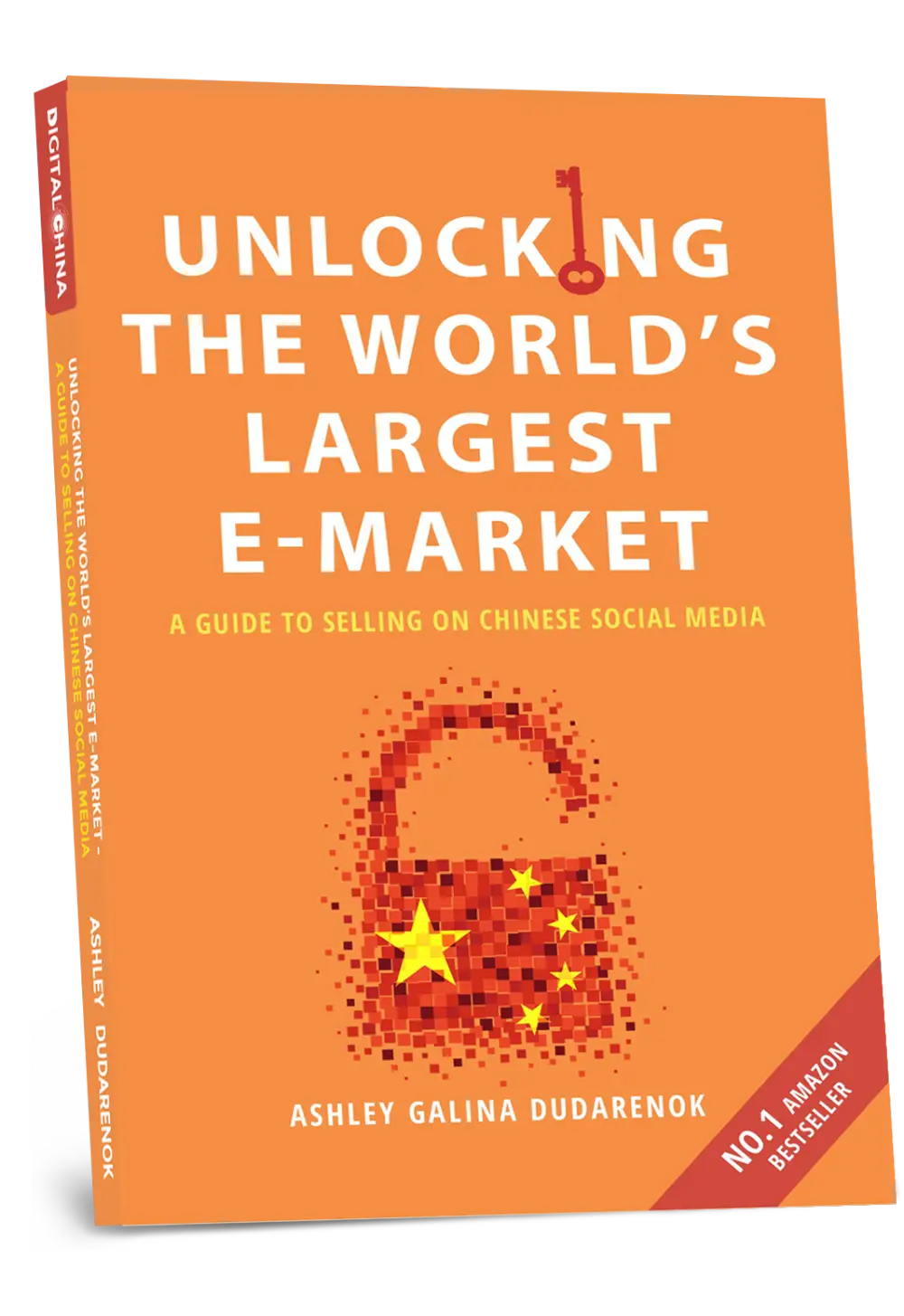
UNLOCKING THE WORLD’S LARGEST E-MARKET:
A GUIDE TO SELLING ON CHINESE SOCIAL MEDIA
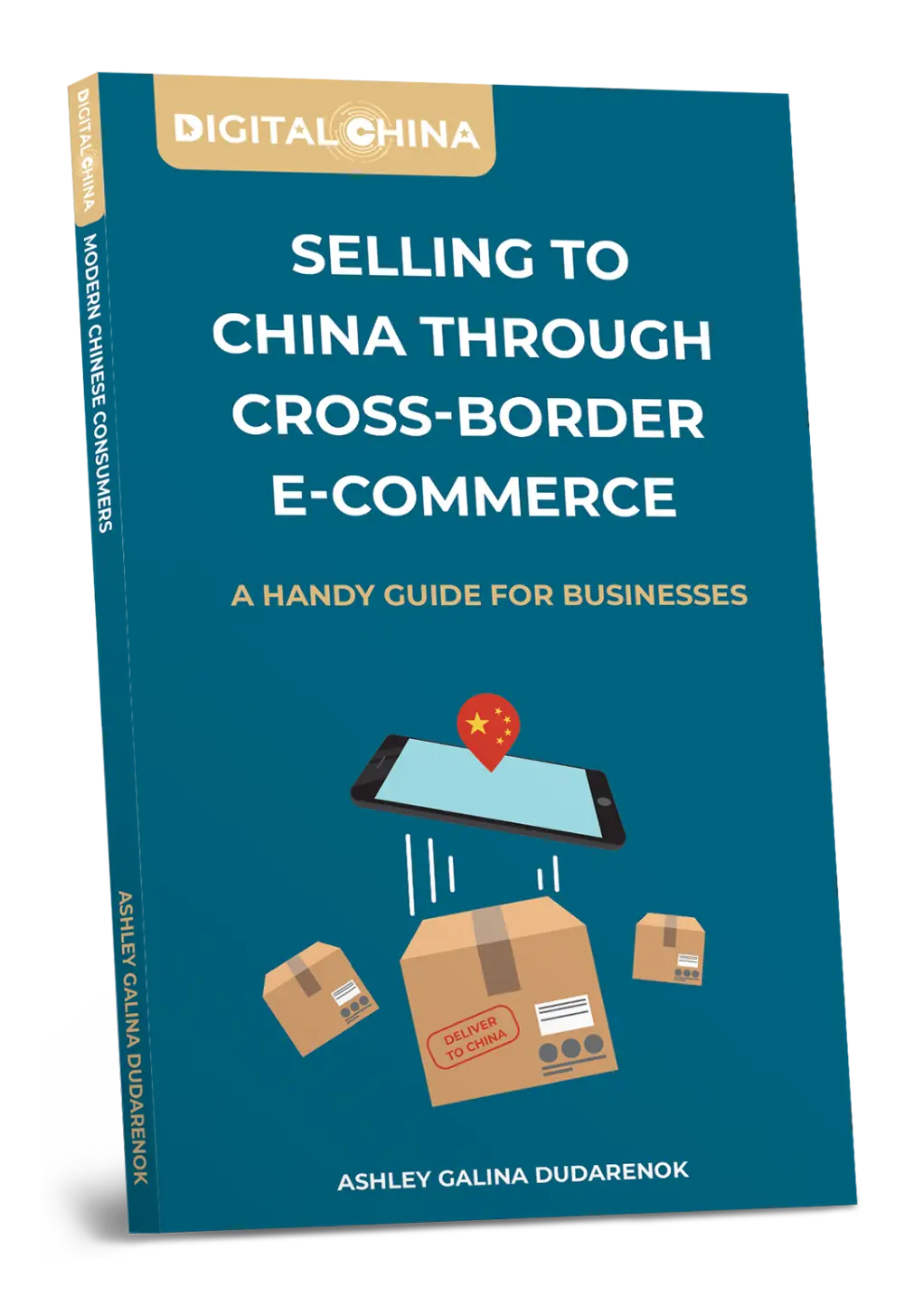
SELLING TO CHINA THROUGH CROSS-BORDER E-COMMERCE:
A HANDY GUIDE FOR BUSINESSES
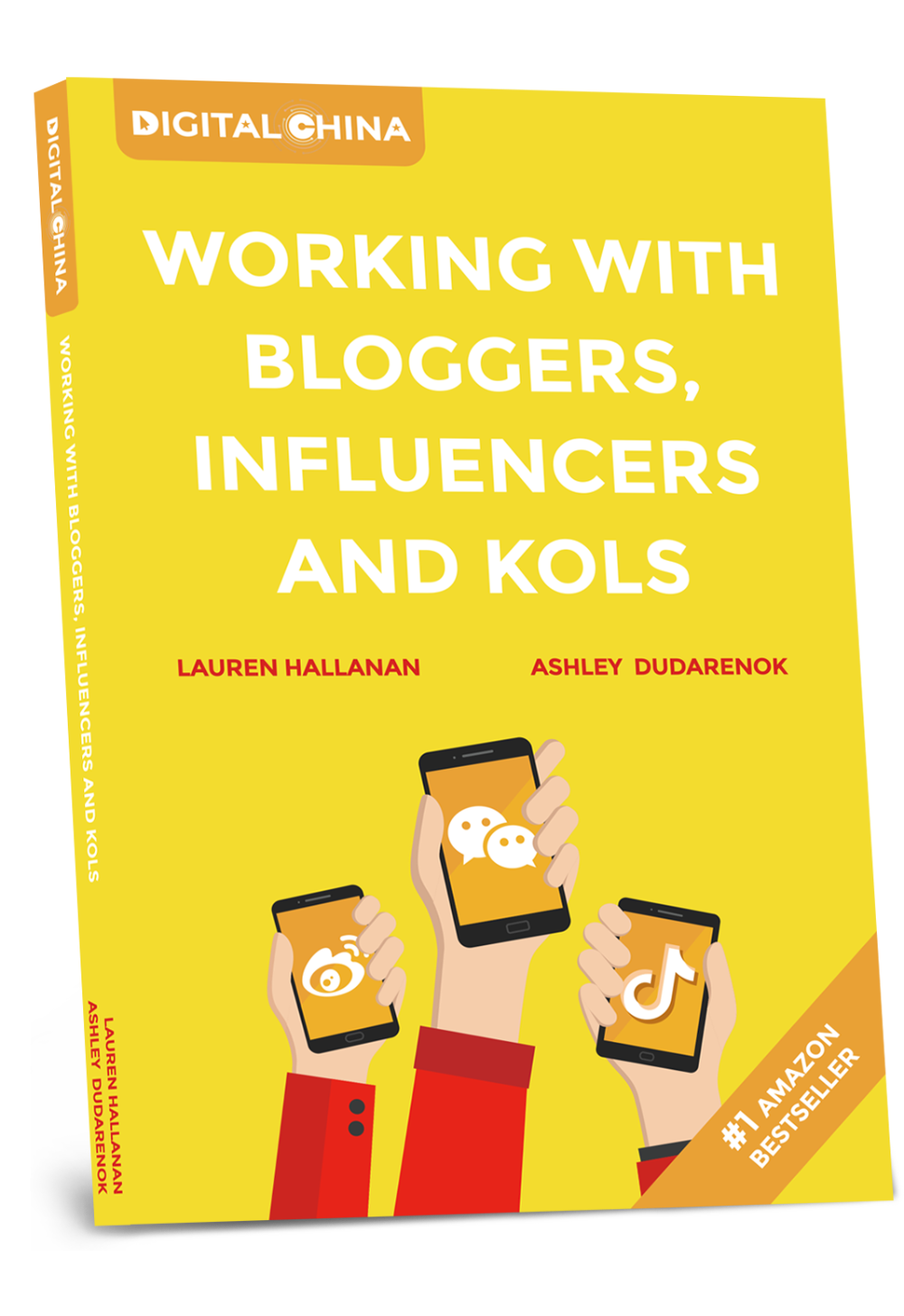
DIGITAL CHINA:
WORKING WITH BLOGGERS, INFLUENCERS AND KOLS
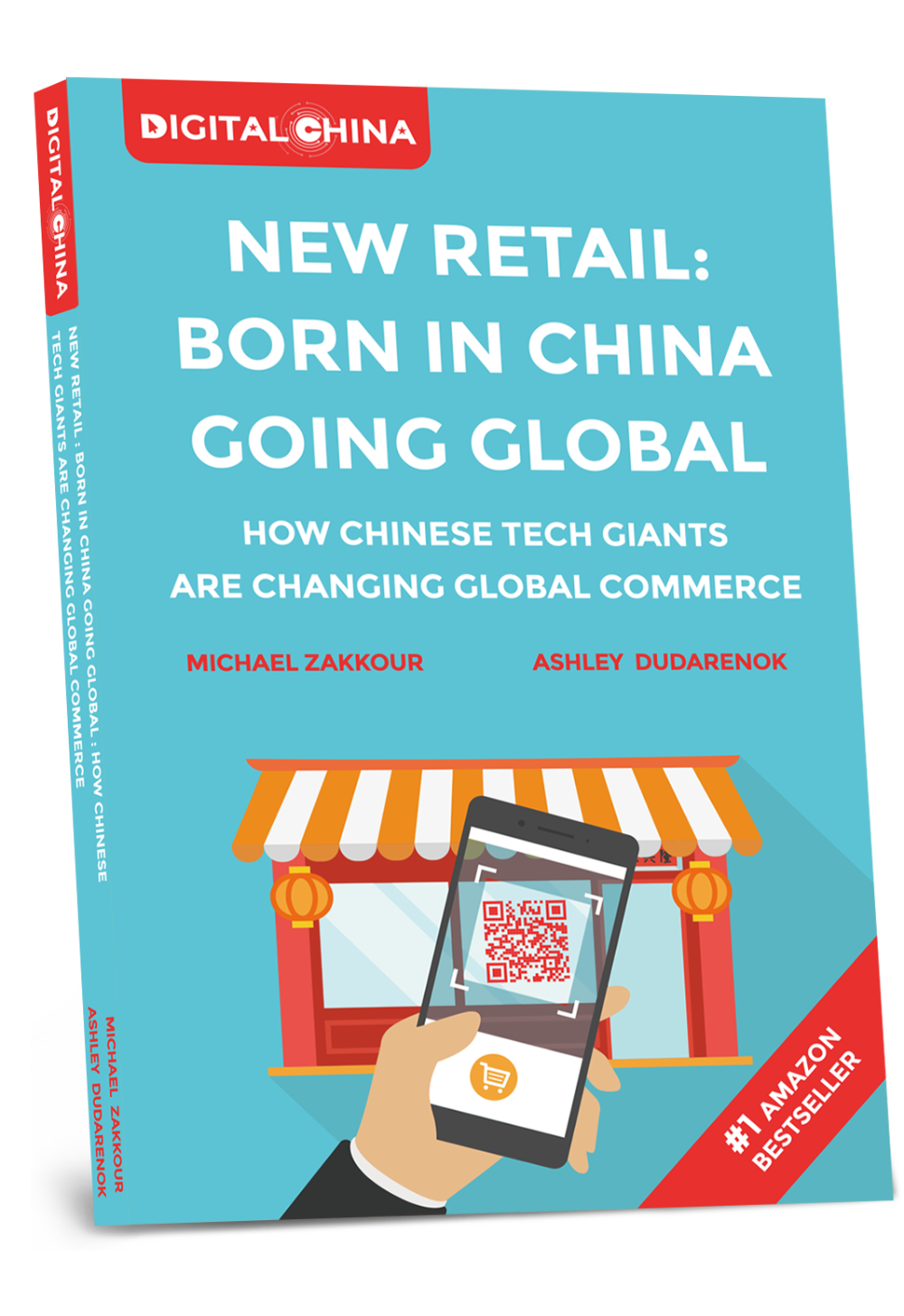
NEW RETAIL BORN IN CHINA GOING GLOBAL:
HOW CHINESE TECH GIANTS ARE CHANGING GLOBAL COMMERCE
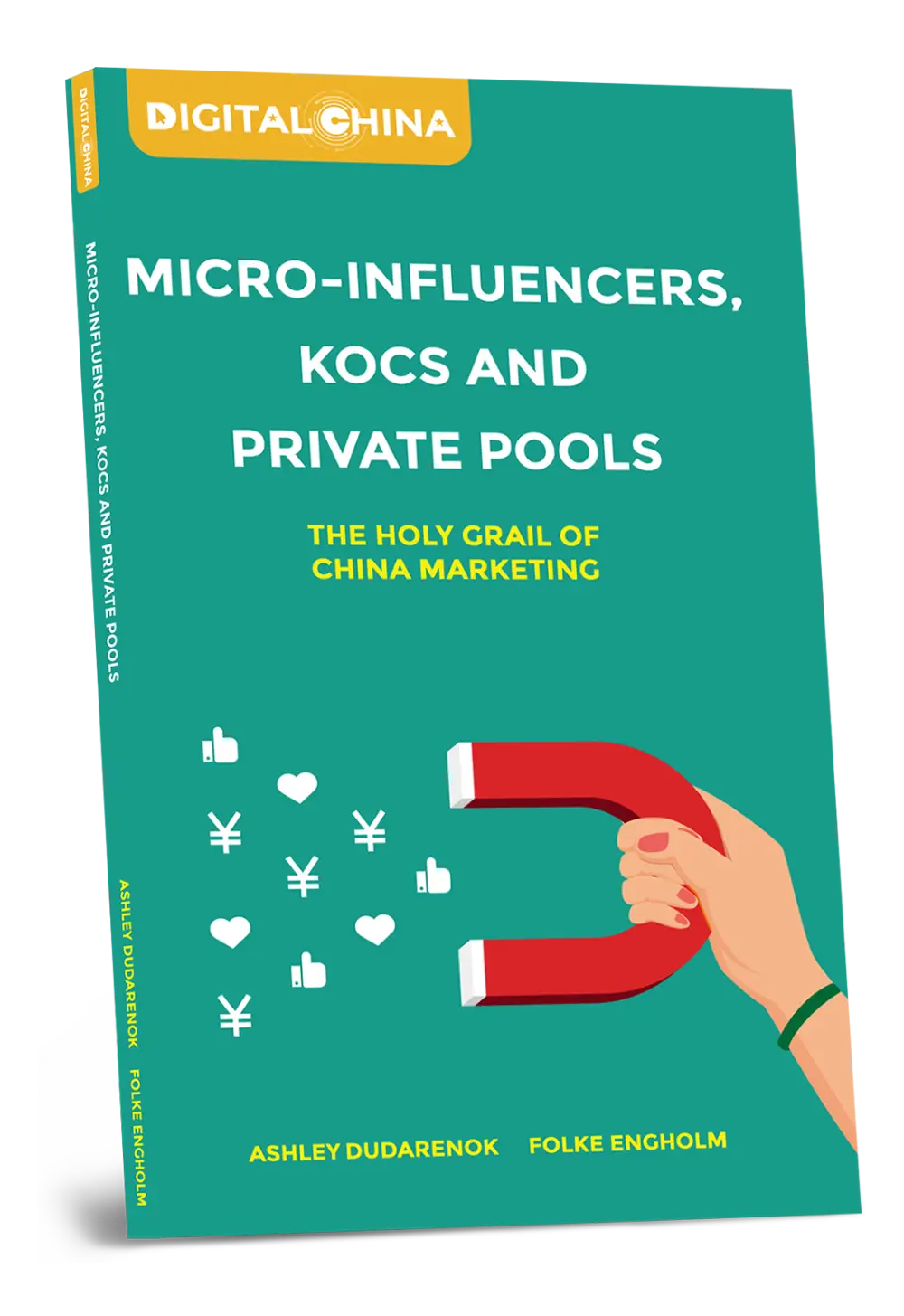
MICRO-INFLUENCER, KOCS AND PRIVATE POOLS:
THE HOLY GRAIL OF CHINA MARKETING









